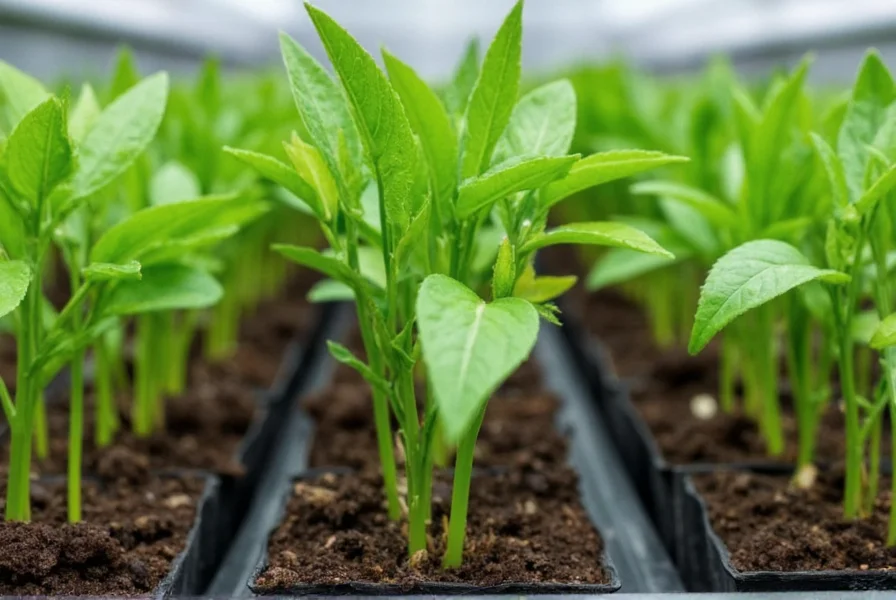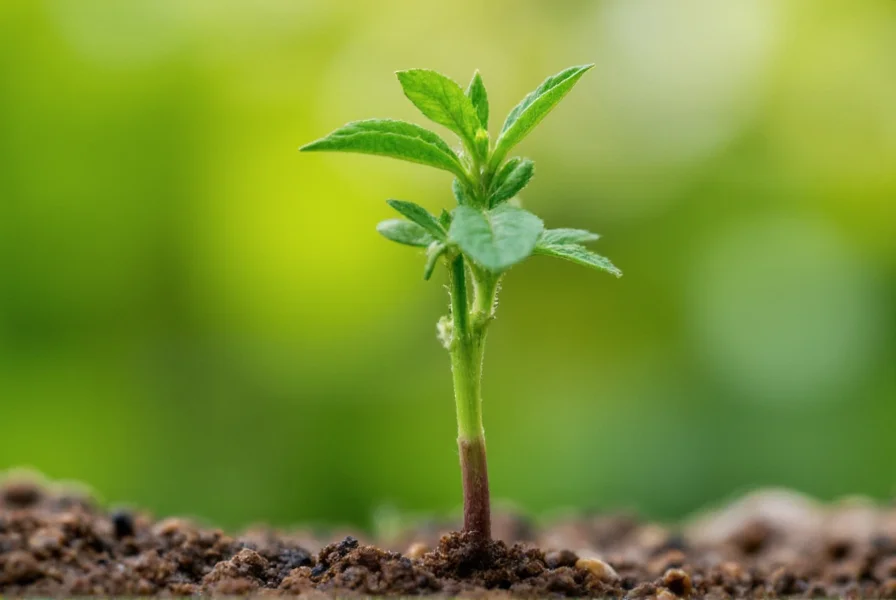Pepper seedlings represent the critical early growth phase that determines your harvest's success. Whether you're cultivating bell peppers, jalapeños, or specialty varieties, understanding their specific requirements during this vulnerable stage separates thriving plants from disappointing yields. This comprehensive guide details science-backed practices for nurturing healthy pepper seedlings from germination to transplant.
Optimal Environmental Conditions for Pepper Seedlings
Peppers originated in tropical climates, making warmth essential for seedling development. Maintain consistent soil temperatures between 70-85°F (21-29°C) using heat mats during germination. Unlike many vegetables, pepper seeds won't reliably sprout below 65°F (18°C). After emergence, slightly cooler air temperatures (65-75°F / 18-24°C) prevent leggy growth while roots continue developing in warm soil.
Light requirements often get overlooked in growing peppers from seedlings. Provide 12-16 hours of bright light daily. South-facing windows typically offer insufficient intensity, causing stretched, weak stems. LED grow lights positioned 2-4 inches above plants deliver optimal PAR (Photosynthetically Active Radiation) without burning tender foliage. Rotate containers daily for even development when using single-direction lighting.

Soil and Watering Best Practices
The ideal soil for pepper seedlings balances moisture retention with drainage. Use a sterile seed starting mix rather than garden soil, which may contain pathogens causing damping off. Incorporate 20-30% perlite or vermiculite to improve aeration. Maintain pH between 6.0-6.8—peppers show iron deficiency (yellowing between veins) in alkaline conditions.
Watering technique significantly impacts seedling health. Follow this pepper seedling watering schedule:
| Seedling Stage | Watering Frequency | Method |
|---|---|---|
| Germination (pre-emergence) | Keep consistently moist | Mist or bottom-water |
| First true leaves | When top 1/2 inch dries | Water at soil level |
| 3-4 sets of true leaves | When top inch dries | Deep watering |
Overwatering remains the most common mistake in how to care for pepper seedlings. Soggy soil suffocates roots and promotes fungal diseases. Always check moisture depth with your finger before watering. Morning watering allows foliage to dry before evening, reducing disease risk.
Transplanting and Hardening Off Process
Timing your when to transplant pepper seedlings requires attention to both calendar and plant development. Wait until seedlings have 3-4 sets of true leaves and outdoor nighttime temperatures consistently exceed 55°F (13°C). The hardening off process prepares tender indoor-grown plants for outdoor conditions:
- Start 7-10 days before final transplant date
- Begin with 1-2 hours of filtered sunlight in a sheltered location
- Gradually increase exposure by 1-2 hours daily
- Expose to gentle wind using a fan indoors during final days
- Withhold fertilizer during hardening off
Skip hardening off at your peril—sudden exposure to full sun and wind causes sunscald and transplant shock. Monitor weather forecasts closely; postpone hardening if temperatures drop below 50°F (10°C).
Troubleshooting Common Pepper Seedling Problems
Even experienced gardeners encounter challenges with pepper seedling problems. Recognize these issues early:
- Leggy growth: Insufficient light intensity or duration. Increase light exposure immediately.
- Damping off: Fungal disease causing stem collapse at soil line. Prevent with sterile mix, proper airflow, and avoiding overwatering.
- Purple leaves: Phosphorus deficiency or cold stress. Warm root zone and use balanced fertilizer.
- Yellow lower leaves: Natural senescence or nitrogen deficiency. Remove affected leaves and apply diluted fish emulsion.
For organic pepper seedling care, use compost tea instead of synthetic fertilizers during the seedling stage. Begin feeding when second set of true leaves appears with quarter-strength solution every 7-10 days.
Advanced Techniques for Robust Seedlings
Professional growers employ these science-backed methods to produce vigorous pepper transplants:
Gentle stress conditioning: Lightly brush seedlings with your hand 20-30 seconds daily to stimulate thicker stems through thigmomorphogenesis. This mimics wind exposure, creating sturdier plants.
Root zone warming: Maintain soil temperature 5-10°F warmer than air temperature using propagation mats. This encourages robust root development without leggy top growth.
Proper spacing: Provide minimum 2-inch spacing between seedlings to ensure adequate light penetration and airflow, reducing disease pressure. Crowded seedlings compete for resources and develop weakly.
Remember that pepper seedlings grow slower than tomatoes—patience yields better results. Rushing the process by forcing growth with excessive heat or fertilizer creates weak, disease-prone plants. Focus on steady, balanced development for maximum harvest potential.
When should I start pepper seeds indoors?
Start pepper seeds 8-10 weeks before your last expected frost date. This timing allows seedlings to reach optimal transplant size (6-8 inches tall with multiple leaf sets) while avoiding becoming root-bound in containers. Peppers require longer indoor growing time than tomatoes due to slower germination and early growth.
Why are my pepper seedlings falling over?
This typically indicates damping off disease, caused by fungal pathogens in overly moist conditions. Prevent this by using sterile seed starting mix, providing excellent airflow, avoiding overwatering, and watering in the morning. Remove affected plants immediately to prevent spread. Bottom watering helps keep foliage dry and reduces disease risk.
How much light do pepper seedlings need?
Pepper seedlings require 12-16 hours of bright light daily. Natural sunlight through a south-facing window often provides insufficient intensity, causing leggy growth. Use LED grow lights positioned 2-4 inches above plants for 14 hours daily. The light intensity should be 200-400 µmol/m²/s PPFD (Photosynthetic Photon Flux Density) for optimal development.
Can I plant pepper seedlings deeper like tomatoes?
Unlike tomatoes, peppers should not be planted deeper than their original soil level. Burying the stem can cause rot and disease. If seedlings become leggy, create a shallow trench and lay the stem horizontally, covering only the root ball and lowest set of leaves. The stem will naturally grow upward while developing additional roots along the buried portion.
What's the best fertilizer for pepper seedlings?
Use a balanced, mild fertilizer (10-10-10 or similar) at quarter-strength when seedlings develop their second set of true leaves. Organic options include diluted fish emulsion or compost tea. Avoid high-nitrogen fertilizers which promote excessive leaf growth at the expense of root development. Always water with plain water before applying fertilizer to prevent root burn.











 浙公网安备
33010002000092号
浙公网安备
33010002000092号 浙B2-20120091-4
浙B2-20120091-4